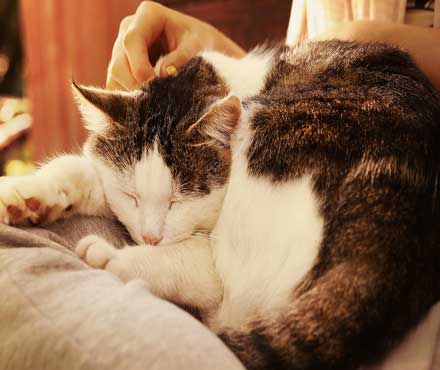Therapy Cats: The Power of the Meow

Cats are more than just our feline friends that we love and enjoy coming home to after a long day; they can provide healing therapy. Many people believe that dogs are the only therapy animals, and this is understandable because dogs are the majority of therapy pets. However, what many people don’t know is that cats are also incredible therapy animals, all through the power of the meow.
Benefits
Therapy cats provide immense benefits to many different people ranging from students stressed about schoolwork to patients in hospitals. These special feline friends will provide a sense of relaxation and comfort to whoever they meet.
Purring: we all know the sound and accompanying vibration. It turns out that purring has healing properties that can reduce depression, anxiety, and can also lower blood pressure. Even as amazing as this is, the vast benefits of therapy cats do not stop here!
Therapy cats also provide incredible benefits to children with autism. In 2012, a study was conducted by French researchers that examined the effect that therapy cats had on autistic children. The results were incredible: therapy cats helped improve the prosocial behaviors of children with autism aged five and up. Additionally, the children displayed more positive effects such as smiling, laughing, and less self-focused behaviors.
Qualities
The most important quality of a therapy cat is his personality. He must be tame, calm, gentle, and sweet in order to provide therapy to those in need. Additionally, it is important that he is comfortable with other people and pets. Because his environment will constantly be changing, he must also be readily and easily adaptable to all different kinds of surroundings such as hospitals, schools, or even jails.
Registration

Do you think that your cat would make a great therapy pet? Well, there are a few steps you and your cat can take to become registered. Firstly, do some research and choose a pet therapy program to receive registration through, such as the very popular Pet Partners program. Look at the program’s website and determine if you and your cat meet the program’s requirements. If you do, then it’s time to sign up and begin registration!
To achieve certification through Pet Partners, you and your cat will have to complete a few steps: a handler course, a health screening, a team evaluation, and a volunteer agreement. Each of these steps will vary with whichever program you choose; however, regardless of the process, all therapy pet programs will be equally rewarding and beneficial in the end.
Cats have proven their immense therapeutic abilities time after time. If you are considering registering your cat as a therapy pet, go for it! Seeing all the smiles that your cat creates will be well worth the experience.
Sources:
- http://journals.plos.org/plosone/article?id=10.1371/journal.pone.0041739
- https://www.medicaldaily.com/children-autism-can-become-more-social-cat-their-side-343684
- https://www.disabled-world.com/disability/serviceanimals/cats.php
- http://www.catster.com/lifestyle/how-to-certified-therapy-cat
- https://petpartners.org/
Previous article

Next article

Related posts
View all-

What Can You Use Instead of Cat Litter?
Traditional cat litter is convenient, but it’s not the only option. Many cat owners look for alternatives to reduce waste, save money, or avoid chemicals found in clay-based kitty litter. Some options offer better odor control, while others are more eco-friendly or gentler on a cat’s paws.
Read Article -

How to Keep My Backyard Smelling Fresh
A clean backyard should smell fresh, unlike pet waste, smoke, or mold. Bad smells can linger, especially when dog poop, urine, or food scraps attract flies and bacteria. If your yard has a foul odor, it's time to take action. The first step is cleaning up pet feces, trash, or rotting food. A garden hose can wash away dirt and urine from artificial turf, patios, and decks. To neutralize odor, Use baking soda, white vinegar, and essential oils.
Read Article -

What Supplies Do First-Time Cat Owners Need?
Bringing home a new cat is exciting, but making them feel safe and comfortable takes more than love. First-time cat owners must prepare with the right supplies to ensure a smooth transition. From a litter box to cat food and a warm bed, having the basics ready can help your new kitty settle in faster. This guide covers everything a new cat owner needs to make their new pet feel at home.
Read Article



